What’s Budding
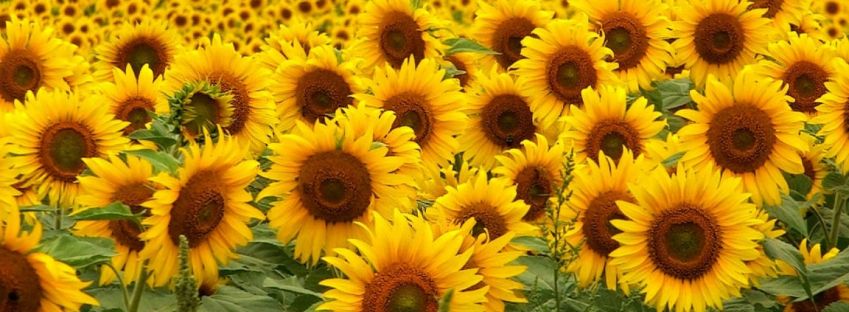
What’s Budding
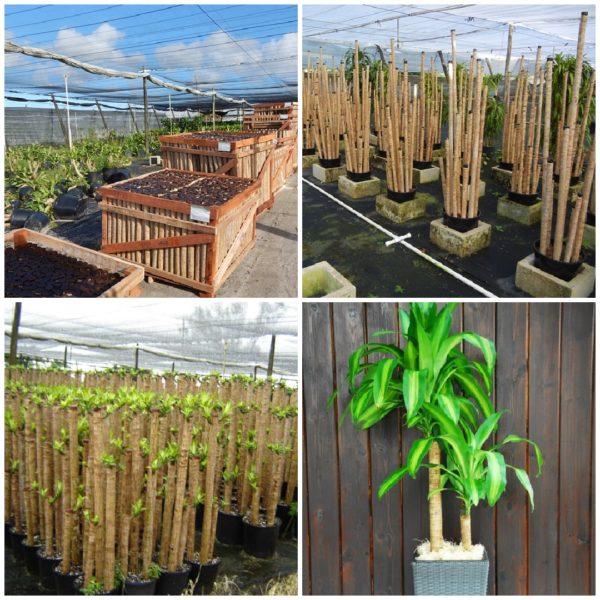
Costa Rica to Florida and on to Michigan
The potted plants we buy from Florida growers for interiorscape use are generally produced in one of two ways. Either plants are rooted from herbaceous or woody cuttings, or they are grown from seeds. Palms, for instance, begin as seeds, and take several years to produce. Pothos, on the other hand, are rooted from herbaceous cuttings, and can be produced in just a few weeks.
The species I find most fascinating as to production method is Dracaena massangeana cane. The charm of the plant is the sturdy and straight canes, as well as the nice even heights of the staggered canes, evenly spaced around the grow pot. After seeing these plants in production in a Florida nursery, I understand how they can be so symmetrical.
The plants actually begin in Costa Rica, on farms that produce the stout, straight canes. Stock plants, many feet tall, are cut in the field. In a cutting shed, the canes are put through a table saw, producing level and straight ends and exact lengths. Both ends of each cane are dipped in wax to prevent moisture loss. One color wax is used to mark the top, another color for the bottom.
The canes are crated, and then fumigated. Plants coming into the United States from outside the country must pass USDA inspection. Once received at a Florida nursery, new crops are potted up as needed. A 10” diameter grow pot will receive 3 canes of proscribed lengths. Perhaps a 1’, 2’ and 3’ cane together. A 14” grow pot will get 4 canes, typically a 2’, 3’, 4’, and 5’ cane. The base of the cane may be nicked to remove wax and expose fresh cells under the thin bark, and a rooting hormone powder is often used.
The potting media is pasteurized, and the newly potted plants go first to a mist house, where they stay until the roots begin to sprout and secure the canes. Temperatures are usually kept between 75 and 90 degrees.
Once the roots are coming along well and multiple buds are beginning to break at the top of each cane, they are carefully moved from the mist house to the shade house, to continue root and leaf development for a few months. The goal is a well-rooted pot of canes with heads from 6-12” in size. We like to ship these plants boxed for extra protection, as they are heavy for their size and easily damaged if pulled about by a single cane. A typical grower might have 3-4 successive crops from mist to finished and ready to ship out.
Every crop has its own story and most growers produce several varieties of a species and often several very different species. There are tiny farms producing less than an acre altogether and huge farms with tens of acres under shade houses. Some sell direct, some only through brokers, and many do both. I love to ride around in a golf cart and tour crops with the grower or salesperson. I always learn something new, and typically see new varieties that I want to try in our designs.
On the Green Side
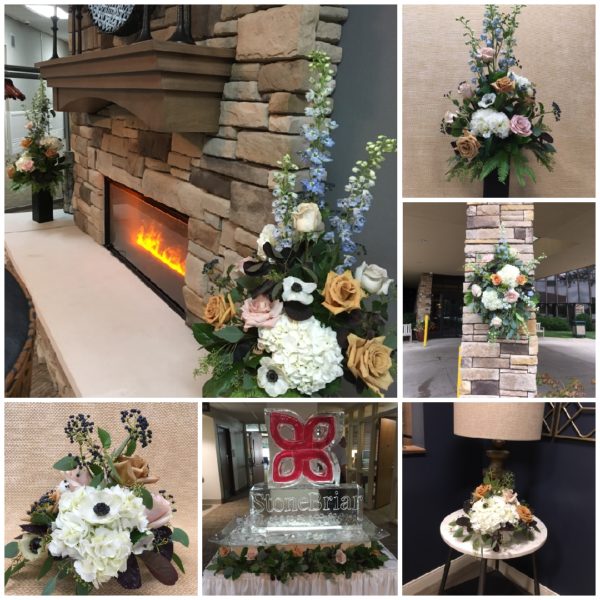
We are always pleased to fill your local floral orders, whether sympathy, get well, anniversary, birthday or just sending love and affection. A great deal of our floral work is for events, often cocktail receptions, luncheons or dinners, weddings or galas.
Our event floral focus is always to fulfil our clients’ goals, utilizing flowers to coordinate with linens, accent architectural elements, add color, enhance a theme, and create a mood or feeling. We were pleased to recently assist with the ribbon-cutting for the new StoneBriar at Burcham Hills. The color palate was interesting, selected to compliment the colors in the wallcoverings and upholsteries. Several rooms and areas were involved, both inside and out.
We created tall and narrow pieces for a fireplace hearth, centerpieces for tables with seating, accent pieces for tables in the waiting area, floral pieces to adorn stone columns, and flower garlanding for an ice sculpture base. Dave chose roses in coffee, quicksand, and toffee, as well as white hydrangeas and anemones, deep purple smokebush foliage, pale blue delphiniums for height, seeded eucalyptus and Australian fern and seeded viburnum for accents. We also provided rental plants for the lectern and beauty shop. For the patio, their rental included flowering kalanchoes and large palms.
Altogether, we were able to create a finished and inviting look for the space from entry and check-in, throughout a tour of all the new spaces available to new residents who are preparing for a move to this spacious and inviting new living facility.
Digging In
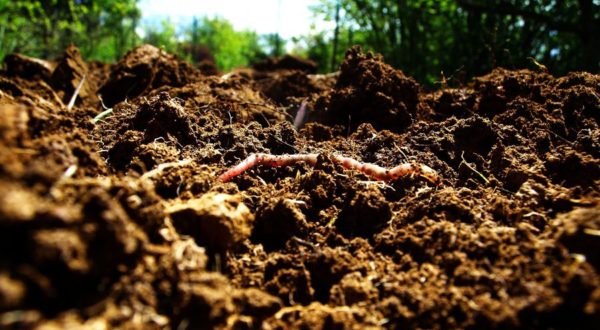
Is Your Soil Healthy?
Soil health is defined as the continued capacity of soil to function as a vital living ecosystem that sustains plants, animals, and humans. Soil is composed of minerals, organic matter, water, air, and billions of bacteria, fungi, and other microbes. A balance of these components dramatically improves soil health and garden productivity.
Roughly 45% of the soil content consists of small bits of weathered rock that has been broken down into minerals essential for plant growth.
Organic matter is partially-decomposed remains of soil organisms and plant life. Adding compost will improve almost any soil by binding together soil particles into porous crumbs which allow air, water, and roots to move more easily through the soil.
Organic matter also retains moisture, absorbs and stores nutrients, and is food for microbes and other life forms in the soil. Soil should be 5-10 % organic matter. We always encourage the use of bark mulch in planting beds, not only to insulate the soil in extreme heat and cold, reduce water loss through evaporation, and deter weeds, but also because bark breaks down slowly, enriching the soil as organic matter.
Healthy soil is 25% water. Water is held in pore spaces between soil particles. Large pore spaces allow rain and irrigation to move down to the root zone and into the subsoil. In soil with small pore spaces, water drains very slowly and these soils tend to be hard, and crack when dry.
Another 25% of a robust soil is air. Well-aerated soil has plenty of pore space between the soil particles. Just like humans, plants, worms, and other soil life needs air. Plants need air above ground for photosynthesis, and in the soil, air is an important source of the atmospheric nitrogen used by the plants. Good soil provides just the right space between its particles. Adding organic matter helps balance the air supply. Avoid working the soil when it’s wet, using heavy equipment that can compact the soil, or stepping in planting beds when possible.
A healthy organism population is essential to healthy soil. Soil organisms include earthworms, nematodes, springtails, bacteria, fungi, protozoa, and many others. These organisms help convert organic matter and minerals into the vitamins, hormones, disease-suppressing compounds, and nutrients that plants need to grow.
Most soil is less than perfect- too much clay, too acidic, too compacted, too salty, etc. Garden plants will eventually show their unhappiness by displaying stunted growth or off-color leaves. A soil test will provide a wealth of information about your soil. Soil tests usually rate the levels of soil pH, phosphorus, potassium, magnesium, and calcium. Some labs also offer tests for micronutrients that may be helpful if you think the soil may not be providing enough nutrients for robust plant growth and health. Click this link to purchase a home lawn and garden soil test kit. https://homesoiltest.msu.edu/
The kit includes a self-mailer with everything you need. Simply place one cup of soil in the plastic bag provided, and mail it back in the postage-paid envelope. Within two weeks, you will receive an e-mail with your results and a custom fertilization program to meet your plants needs.
In addition to finding the soils nutrient content and mineral levels, it is important to identify the soil type. By conducting a simple soil test in a mason jar, you can see what type of soil you have. The three predominant components are sand, silt, and clay. The portions of sand, silt, and clay affect drainage and nutrient availability.
Sandy soil consists of small particles of weathered rock, and is the poorest type of soil for thriving plants. Water runs through sandy soil very quickly, taking the nutrients with it.
Silt soil is made up of rock and other mineral particles that are smaller than sand, but larger than clay. Silt is easily transported by moving water, and is mostly found near bodies of water, such as rivers and lakes. Silt is more fertile than sand and clay.
Clay soil has the smallest particles that are tightly packed together with little to no air space. Clay is very sticky and heavy when wet. This type of soil does not drain well, or provide an environment for plant roots to flourish.
Loamy soil is a combination of almost equal parts sand, silt, and clay. This is an ideal soil for plants with the beneficial properties from all three. Loamy soil tends to be soft and crumbly when dry, and sticky and moldable when moist. It is a soil that retains moisture and nutrients, but also drains well.
Click the following link for instructions on how to perform a mason jar soil test, and how to amend the soil for your soil type to create the ideal loam soil. https://www.gardeningknowhow.com/garden-how-to/soil-fertilizers/soil-texture-jar-test.htm

The Buzz
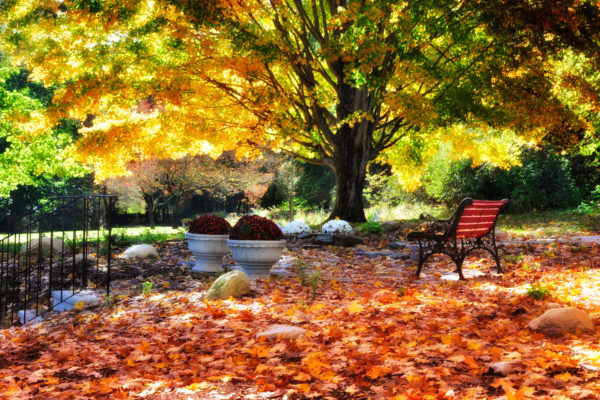
What should happen when fall comes and the leaves come down from the trees? In your landscape beds, there will likely be perennials to cut back, removing the browning and drooping leaves and leaving the area clean for new spring growth. The loose leaves of trees and shrubs will be raked or blown out, and any remaining weeds should be pulled. Many shrubs can be effectively pruned now. Avoid pruning those that bloom on the previous year’s wood, or you won’t see flowers next spring.
This is also a great time to evaluate how the plants did this year. Have any plants become too large for the space or too irregular in shape over the years? It may be time for a design review to plan for changes. Is new mulch needed now, or in spring? Mulch when the foliage is at a minimum, for best coverage and least damage to perennials. Remember that mulch is a great help in minimizing frost heave and helping plants overwinter, so don’t wait if it has been two years or more.
If you have walnuts, acorns, apples, maple samaras, etc. that drop into your beds, remember that getting them up promptly will reduce the number that will sprout and become a nuisance next year. Many of us can handle our garden maintenance through the year, but a little extra help for spring and fall clean-ups really helps keep the garden in shape. If you need assistance this year, call now for a quote and to get into the schedule.
Copyright © The Plant Professionals